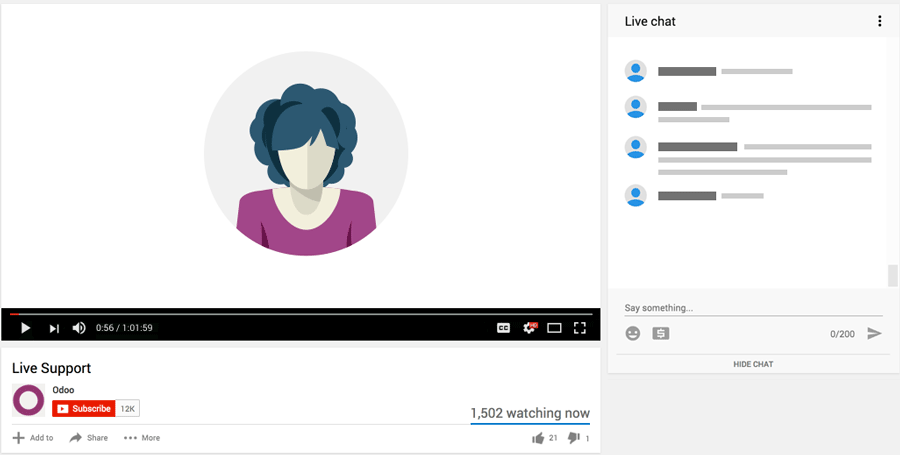The first thing to understand is who is taking the risk
under your factoring agreement.
- If your factor has recourse to force you to buy
back any unpaid invoices, YOU are taking the risk.
- If your factor has no recourse to force you to
buy back any unpaid invoices, THEY are taking the risk.
This is important because it determines how to record the
money you receive.
- If YOU are taking the risk, the money is an
advance. It can only be considered payment once the customer pays the factor. You
have a liability to the factor when you record the funds received.
- If THEY are taking the risk, the money you
receive can be considered payment no matter what the customer does. You can pay
down your Customer Invoices when you record the funds received.
Follow these steps:
A. Create an expense account in your Chart of Accounts where
you book the costs of factoring. This account will be used on the monthly
Vendor Bill from your factor, as well as during recording of the payment where
you will need to write off the 3% you won't receive for each Invoice.

If you are taking the risk, create a current
liability account where you book a credit each time you record cash or payment
received from your factor. You will use this in step 6.
Note:
create
and validate the monthly Bill from your factor when it comes in, using this expense account, and pay it as
normal.
-----------------------------------------------------------------------------------------------------
B. Create a Sales Journal that you can use for Invoices you
plan to factor. Use a different short code so that it is easy to differentiate Invoices
you don’t plan to factor (Customer Invoices journal) from those you do (Factored
Invoices journal).

-----------------------------------------------------------------------------------------------------
C. Create a customized Invoice Report so that when your
Customers receive your Invoice, they are directed to pay the factor instead of
you.
Note: as an alternative to creating a customized Invoice report, you can
create a conditional user defined default for the narration field on the
Customer Invoice so that when the Factoring Invoice journal is chosen, the
field contains verbiage to pay the factor.
-----------------------------------------------------------------------------------------------------
D.
Create
and send Invoices as normal, choosing the correct Journal and report.
Note: you have until you CONFIRM the Invoice to decide if you want to factor it or not. If you change your mind, just select the other Journal before you confirm the Invoice.
If you elect the customized report, you will also need a second email template
that uses that report, so you can select the correct template when emailing the
Customer. Attach the customized report to the second email template.
-----------------------------------------------------------------------------------------------------
E.
Your
Aged Receivable report will show all Customer Invoices and you will see from
the numbers which ones are regular and which ones are factored. Enter no
Customer Payments at this time, since nothing has been paid and you need a
record of what you are owed.

-----------------------------------------------------------------------------------------------------
F. When you receive your initial funds from the Factor, they
will issue a report with each payment so you know which Invoices they are
paying for and how much they are paying (the initial 80%).
1) If they are taking the risk, create a Journal Entry that
debits the bank outstanding receipts account for the amount you get, with a
credit to AR for each Customer Invoice you are being paid for:

2)
If you are taking the risk, create a Journal Entry that debits
the bank outstanding receipts account for the amount you get, with a credit to
the Liability account created for each Customer Invoice you are being paid for:

Note: the debit line for either entry will be available during bank reconciliation to
match with the payment you receive from the Factor, shown on the Miscellaneous
Matching tab:

-----------------------------------------------------------------------------------------------------
G.When you receive your remaining funds from the Factor, they
will issue a report with each payment so you know which Invoices they are
paying the final amounts for (the 17%).
Create a Journal Entry that debits the bank outstanding
receipts account for the amount you get, with a credit to AR for each Customer Invoice
you are being paid for:

Note:
Whether
you are taking the risk or not, by the time you receive the second payment,
there is no longer a risk so the entry is the same. The
debit line will be available during bank reconciliation to match with the
payment you receive from the Factor, shown on the Miscellaneous Matching tab:

If you originally took the risk, (you booked the first payment to the liability account instead of AR) you will also need to create an entry to
debit the liability account and credit AR for each of the prior payments made
for the same Invoices you are receiving final payment on now. The easiest way to do this is to select the
credit Journal Items representing the 80% payment and use the Automatic Entries
option from the Action Menu:

Use the Change Account option and select the AR account so
that every selected debit from the liability account becomes a credit in the AR
account:

-----------------------------------------------------------------------------------------------------
H.
Now
you can match the initial and final payments for each Customer and write off
the remaining 3% to the expense account. Do this via the Aged Receivable report:

For each Customer, select the 80% and 17% payment, and write
off the difference to the expense account:

Note:
you
can speed this process up by creating a reconciliation model that allows you to
write off the expense in a single click.
-----------------------------------------------------------------------------------------------------
Final Note: In either step (F) or step (G) if you receive a payment from
your factor with a mix of 80% and 17% balances, you can still create a single
Journal Entry and credit each line for the correct amount. Just make sure to
enter a single line for each Customer.













